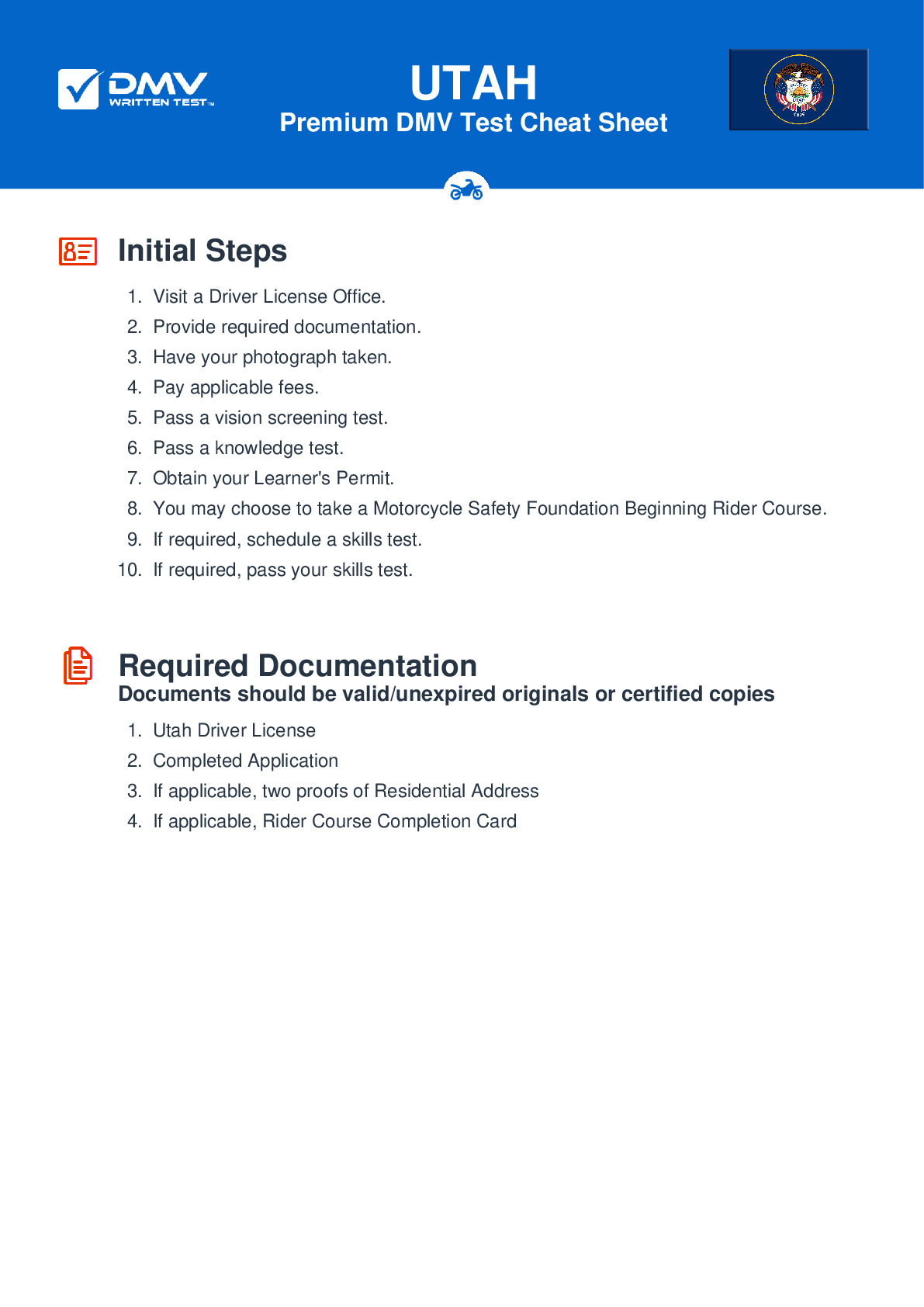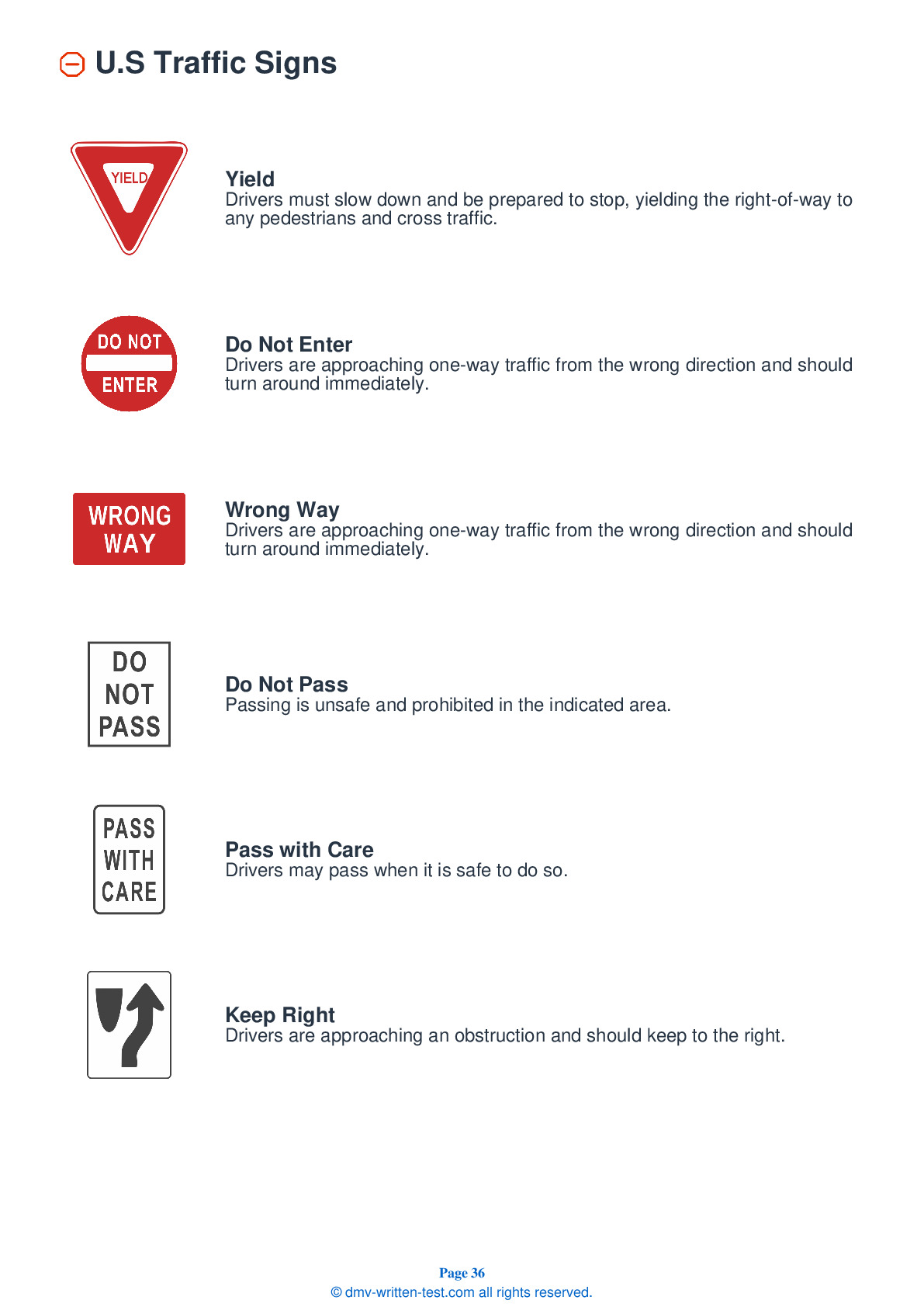2025 Utah Motorcycle Permit Test 14
The following questions are from real DMV written motorcycle permit tests. These are some of the actual permit questions you will face in Utah when getting your motorcycle learners permit. Each motorcycle theory practice test question has three answer choices. Select one answer for each question and select "grade this section." You can find this button at the bottom of the drivers license quiz. For a complete list of questions and answers for Utah please visit https://cheat-sheets.dmv-written-test.com/en/utah/motorcycle.
Number of Tests
Number of Question
Passing Score
13. Fatigue can be increased by:
Explanation
To reduce the danger of fatigue when riding, dress to protect yourself against tiring weather conditions, such as wind and rain. Limit yourself to no more than about six hours of riding per day and stop for a break at least once every two hours. Avoid taking artificial stimulants since you may experience extreme fatigue when they start to wear off.
14. When turning left, you should:
Explanation
A motorcycle must lean to make a turn. To make it lean in the appropriate direction, press the handgrip in the direction you want to turn.
15. When an operator's left arm is bent at the elbow and pointing upward, it means the operator:

Explanation
Instead of mechanical turn signals, operators may use hand signals to indicate turns or stops. If an operator's left arm is bent at the elbow and pointing upward, it means the operator plans to turn right or change lanes to the right.
16. Because of their small size, motorcycles seem to be:
Explanation
Because of their size, motorcycles may seem to be traveling faster than they actually are.
17. The two primary types of helmets are:
Explanation
The two main types of helmets are three-quarter and full-face. Wearers can get the maximum protection from a full-face helmet.
18. Which of the following will help you ride safely on slippery surfaces?
Explanation




